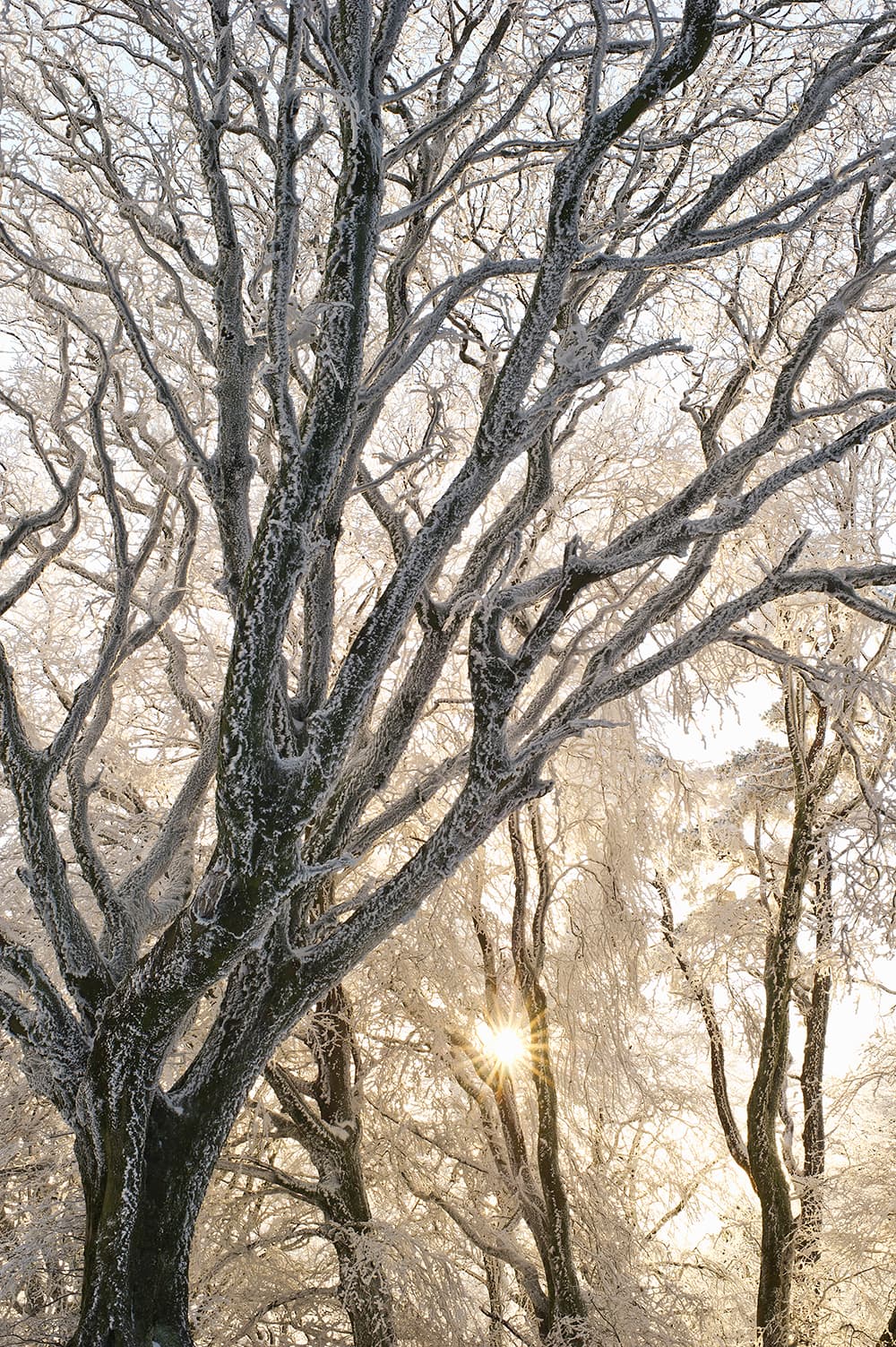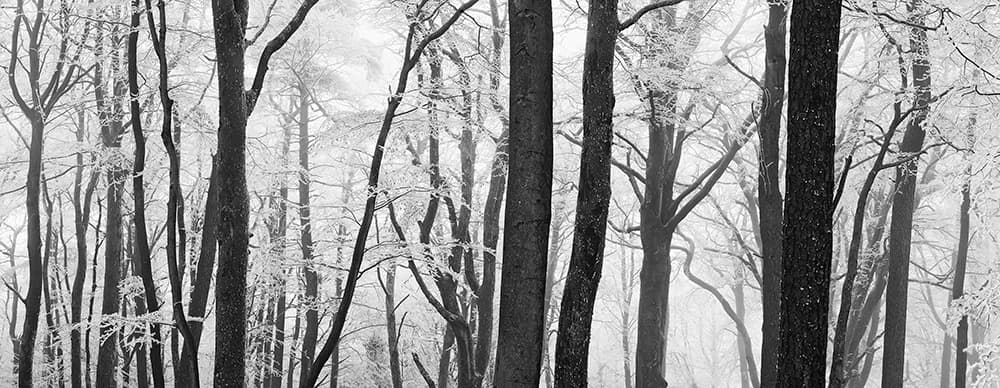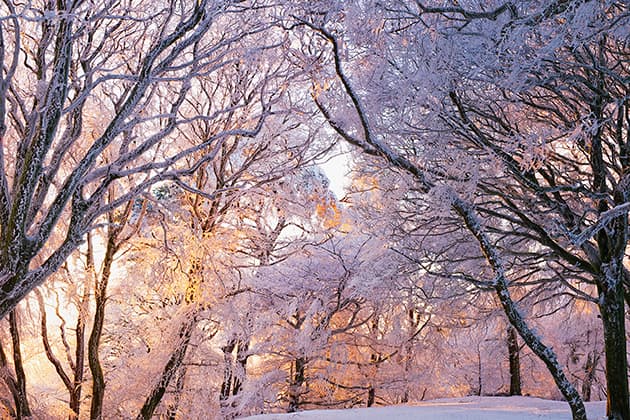
Frosted trees close to the summit of Lewesdon Hill.
At 279m above sea level, Lewesdon Hill is the highest point in Dorset, and is owned by the National Trust. Like many of the hills in the area of the Marshwood Vale, Lewesdon Hill is the site of an Iron Age hill fort. The summit of the hill is covered with mature beech woodland and in the spring a carpet of bluebells adds to any photographic opportunities. Views from the summit can be limited, but it’s the presence of the trees that makes this a great place to shoot. It is very much an area where you will want to photograph the hill and its enclosed, almost secretive, environment rather than the grand view of the Marshwood Vale.
Time to visit
Lewesdon Hill is a great year-round location, offering bluebells in the spring and golden colours in the autumn, but for me this ancient hill is best captured in winter. There is a stark, mystical beauty with gnarled and shapely trees etched in frost, a blanket of snow smothering the summit, and strange and dark shapes merging from thick fog and swirling mists.
A word of warning, though. If you visit on your own in the mist and fog, you will keep looking over your shoulder – it’s just that sort of place!
In winter, it is an all-day location. With the sun low in the sky, there is plenty of opportunity to shoot among the rows of mature trees.
Shooting advice
What to shoot
Lewesdon Hill is covered in mature woodland, some of it grown at random and some of it planted in a more orderly fashion. Given the right lighting conditions, the vantage points and views are endless. Wideangle images and long lens shots are all obtainable and you will want to give yourself plenty of time to have a good exploration of the hill. The woodland lends itself to those who are keen on close-up and macro photography, too.
How to get there
Lewesdon Hill is about two and a half miles from the town of Beaminster and can be reached on foot from there if you are energetic and fit enough. If you prefer, you can park just off the B3162 about a mile south of Broadwindsor village. There is limited parking for a few cars at an area marked on the Ordnance Survey map as Buck’s Head, but be careful not to block the farm entrance. From here, the footpath takes you west along the farm track for about 150m, after which you turn to the right and head uphill along Crabb Hill before reaching Lewesdon Hill. The footpath eventually splits, but whichever direction you choose, you are certain to get some interesting views and subject matter. If in doubt, just head upwards!

All images (above and below) were created from three photographs stitched in Photoshop.

A monochromatic image of trees in heavy fog on the north side of Lewesdon Hill.

Backlit trees at the top of Lewesdon Hill in late afternoon sunlight.
Food and lodging
The best bet is to head to Beaminster where there are a couple of cafés, a pub and a hotel. Possibly the best accommodation in the town is the Bridge House Hotel, a 14th- century inn with bags of character. If you are looking for a light bite, try the Art Deco Café.
Kit list
Lenses
A 24-70mm or 70-200mm full-frame zoom (or equivalent) will suffice for most shots, although a macro lens is useful for frosted leaves and snowy details. The longer focal lengths are ideal for isolating parts of the woods or lone trees appearing out of the fog and mist.
Tripod
A tripod is a must, but a lightweight version is preferable as the paths up the hill are relatively steep. Don’t let this put you off, though – your efforts will be well rewarded at the top.
Waterproof blanket
A bin liner could be useful if you plan any close-up photography – you can use it to protect yourself from the damp ground. If you have the space, a waterproof picnic blanket is perfect for low-level images, and far more civilised.
Jeremy Walker is an award-winning professional photographer specialising in high-quality landscape and location photography. His work is frequently used by advertising, design and corporate clients. Visit www.jeremywalker.co.uk.








